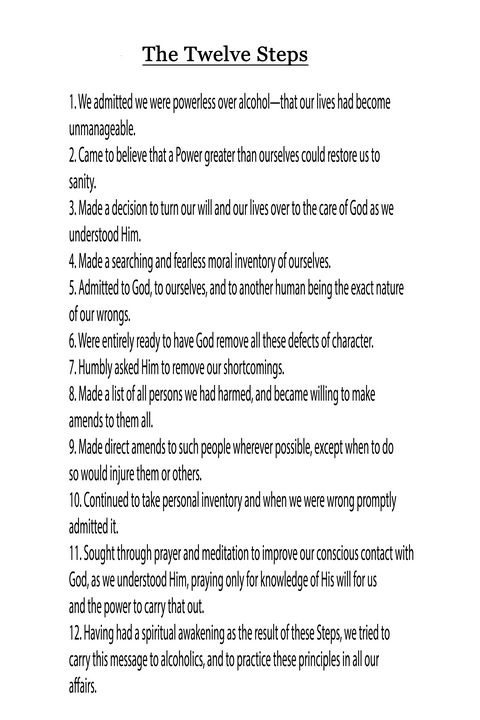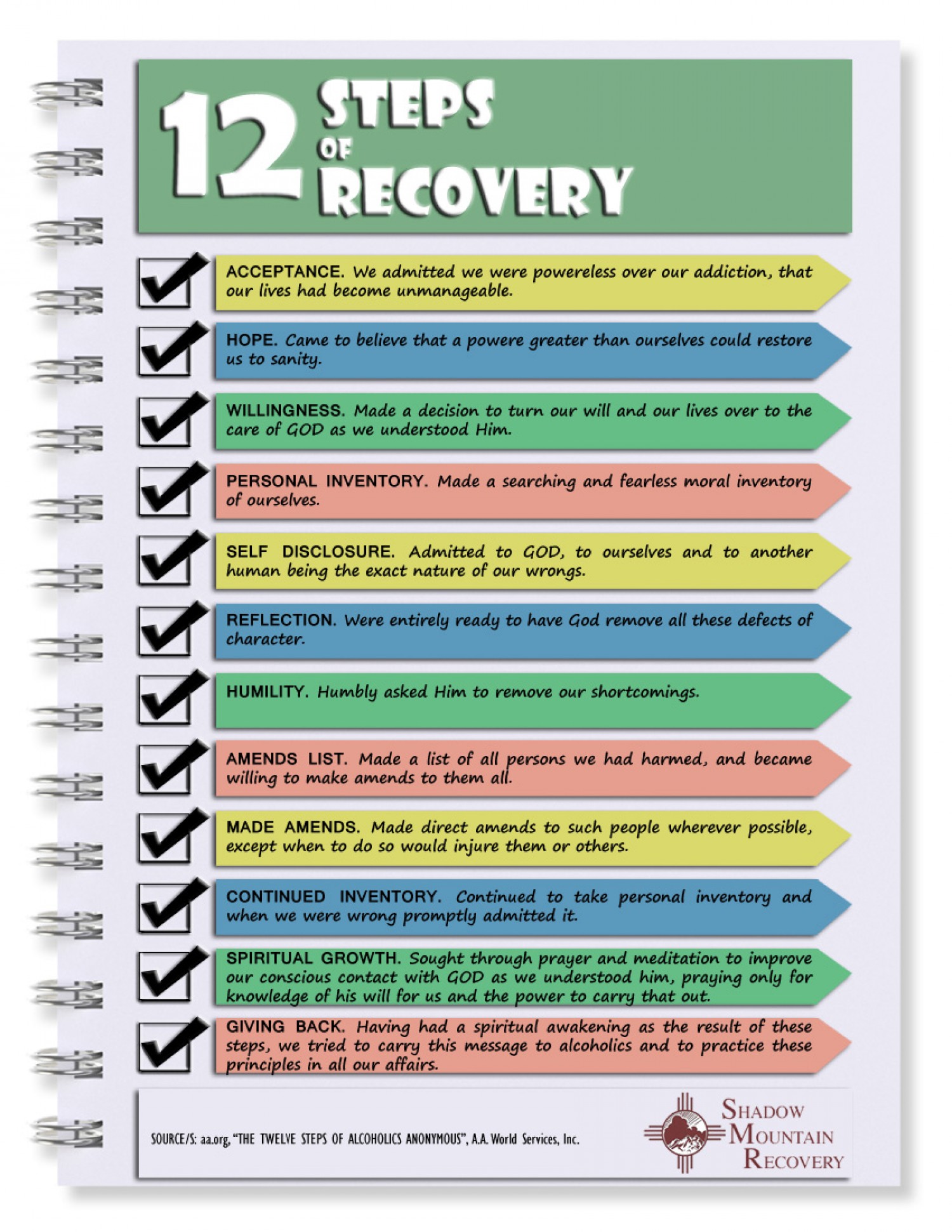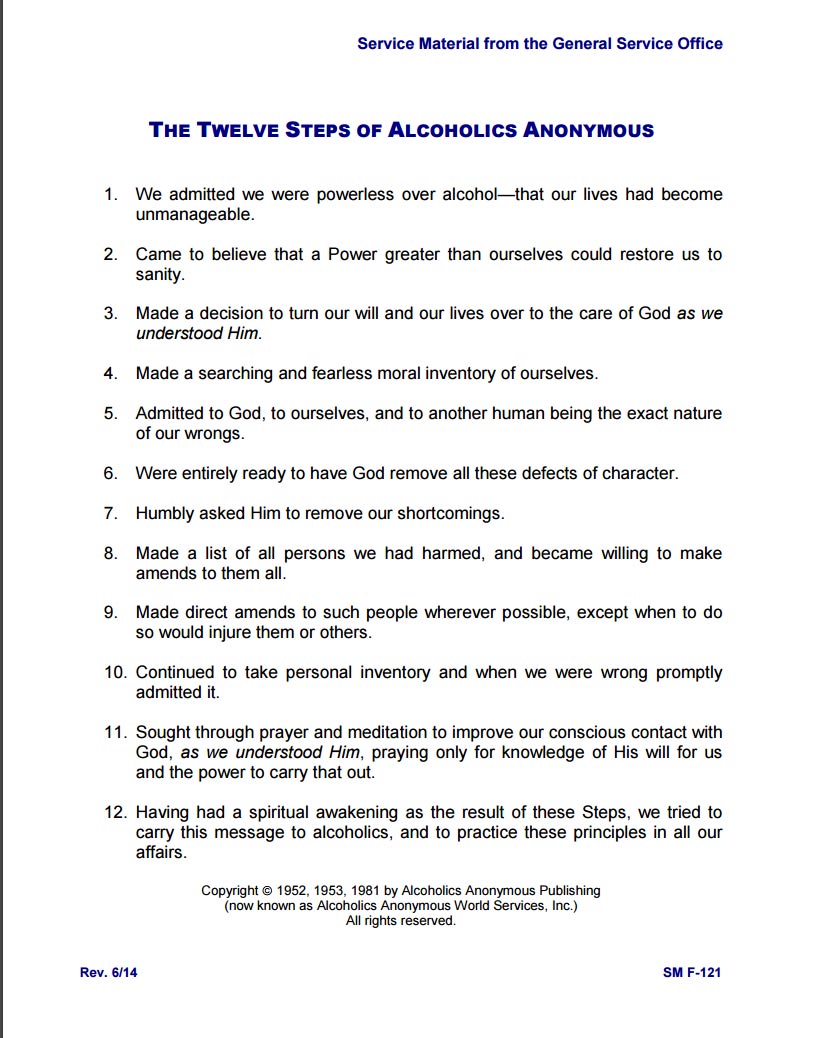Understanding the 12 Steps of AA: A Comprehensive Guide
 Alcoholics Anonymous, commonly referred to as AA, is a well-known support group that has helped countless individuals overcome addiction and find a new lease on life. At the core of AA’s program are the 12 Steps, a set of guidelines that provide a framework for personal transformation and recovery.
Alcoholics Anonymous, commonly referred to as AA, is a well-known support group that has helped countless individuals overcome addiction and find a new lease on life. At the core of AA’s program are the 12 Steps, a set of guidelines that provide a framework for personal transformation and recovery.
What are the 12 Steps?
 The 12 Steps of AA are a series of principles that encourage individuals to confront their addiction, take responsibility for their actions, and make amends where necessary. They serve as a roadmap for self-reflection, personal growth, and ultimately, a path towards sobriety.
The 12 Steps of AA are a series of principles that encourage individuals to confront their addiction, take responsibility for their actions, and make amends where necessary. They serve as a roadmap for self-reflection, personal growth, and ultimately, a path towards sobriety.
Working Through the 12 Steps
 One of the ways individuals engage with the 12 Steps is through the use of worksheets. These printable resources help break down each step into actionable tasks, allowing participants to delve deeper into their journey of healing and recovery.
One of the ways individuals engage with the 12 Steps is through the use of worksheets. These printable resources help break down each step into actionable tasks, allowing participants to delve deeper into their journey of healing and recovery.
The Importance of Accountability
 Accountability plays a significant role in the 12 Steps of AA. By acknowledging our past mistakes and making amends, we not only take responsibility for our actions but also demonstrate a commitment to personal growth and change. This process can be challenging and requires honesty, humility, and willingness to confront difficult truths.
Accountability plays a significant role in the 12 Steps of AA. By acknowledging our past mistakes and making amends, we not only take responsibility for our actions but also demonstrate a commitment to personal growth and change. This process can be challenging and requires honesty, humility, and willingness to confront difficult truths.
Support Networks
 AA meetings provide individuals with a supportive community where they can share their experiences, learn from others, and receive guidance on their journey through the 12 Steps. These networks offer a safe and non-judgmental environment where individuals can openly discuss their struggles, seek advice, and form meaningful connections.
AA meetings provide individuals with a supportive community where they can share their experiences, learn from others, and receive guidance on their journey through the 12 Steps. These networks offer a safe and non-judgmental environment where individuals can openly discuss their struggles, seek advice, and form meaningful connections.
Art and Literature as Tools for Reflection
 Art and literature can be powerful tools for self-reflection and growth. Many individuals find solace in artistic expressions that depict the 12 Steps of AA. These visual representations serve as reminders of the journey and provide inspiration along the way.
Art and literature can be powerful tools for self-reflection and growth. Many individuals find solace in artistic expressions that depict the 12 Steps of AA. These visual representations serve as reminders of the journey and provide inspiration along the way.
Incorporating the 12 Steps into Everyday Life
 The 12 Steps of AA are not solely meant for the duration of recovery but are a lifelong guide for personal growth and spiritual development. The principles advocated by AA can be applied to various aspects of life, fostering resilience, self-awareness, and improved relationships.
The 12 Steps of AA are not solely meant for the duration of recovery but are a lifelong guide for personal growth and spiritual development. The principles advocated by AA can be applied to various aspects of life, fostering resilience, self-awareness, and improved relationships.
Continuing the Journey
 Completing the 12 Steps is not the end of the journey but marks the beginning of a new chapter in one’s life. Continuous commitment to personal growth, attending AA meetings, and seeking ongoing support are all key to maintaining sobriety and embracing a fulfilling life free from addiction.
Completing the 12 Steps is not the end of the journey but marks the beginning of a new chapter in one’s life. Continuous commitment to personal growth, attending AA meetings, and seeking ongoing support are all key to maintaining sobriety and embracing a fulfilling life free from addiction.
Step 9: Making Amends
 Step 9 of AA involves making direct amends to those individuals we have harmed during our addiction. This powerful step not only allows for personal healing but also aids in rebuilding relationships and fostering forgiveness.
Step 9 of AA involves making direct amends to those individuals we have harmed during our addiction. This powerful step not only allows for personal healing but also aids in rebuilding relationships and fostering forgiveness.
The Road to Recovery
 The 12 Steps of AA serve as a roadmap to recovery, providing individuals with the guidance and support necessary to overcome addiction and find a new way of life. While the road may be challenging, embracing the principles of AA can lead to personal transformation, healing, and a brighter future.
The 12 Steps of AA serve as a roadmap to recovery, providing individuals with the guidance and support necessary to overcome addiction and find a new way of life. While the road may be challenging, embracing the principles of AA can lead to personal transformation, healing, and a brighter future.
Remember, reaching out and seeking help is an essential step in the recovery journey. If you or someone you know is struggling with addiction, don’t hesitate to reach out to local support groups, counseling services, or healthcare professionals.